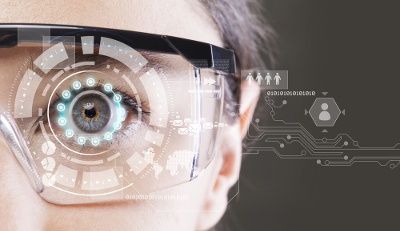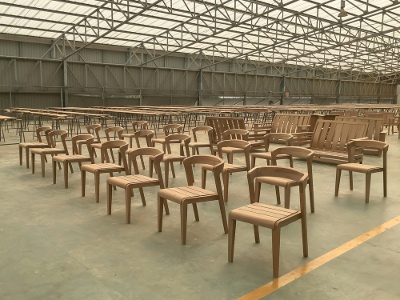Best in Manufacturing – July 30, 2017
Each Sunday, we publish a list of top articles and other content related to manufacturing in areas like quality control, product development, supply chain management, sourcing, auditing and law.
1. Google Glass making a comeback in manufacturing
Google Glass was originally unveiled to much fanfare. Personally, after seeing a video, I thought it could be a revolutionary leap in wearable electronics.  Unfortunately for Google Glass, despite its cool features and futuresque appeal, there was eventually significant backlash to the product. To some, privacy and safety concerns overshadowed any potential benefits that Google Glass might offer.
Unfortunately for Google Glass, despite its cool features and futuresque appeal, there was eventually significant backlash to the product. To some, privacy and safety concerns overshadowed any potential benefits that Google Glass might offer.
Nowadays, Google Glass is making a resurgence, but not for everyday consumers. To whom does it appeal? Manufacturers.
Specifically, manufacturers can equip their employees with Google Glass Enterprise Edition to improve efficiency, communication and coordination. For example, instead of a worker having to look back and forth between a diagram and whatever they’re assembling, they can rely on Google Glass to conveniently provide it within their field of vision.
This video of Boeing below demonstrates quite well how Google Glass can be practically used in the work place:
And this video isn’t far-fetched. The article cites how by 2025, approximately 14.4 million workers in the U.S. will wear smart glasses. I think it’s safe to say that we can expect to see more workers using this technology like those in the Boeing facility. But do you think most workers will wear Google Glass or will competitors emerge? And do you think this development is specific only to the United States? Let us know in the comments section below.
To read more about how Google Glass is being used by manufacturers, check out the full article in the link below:
Google Glass 2.0 Is a Startling Second Act – Steven Levy, Wired.com
2. 3D printing & robots enabling manufacturing...in space!
In September of last year, I wrote about self-healing materials in space. And while I’m still pretty excited about the prospect of awesome technology like that, there’s more amazing news for what’s going on in mankind’s final frontier.
The United States agency NASA has a program called the Commercial Infrastructure for Robotic Assembly and Services (CIRAS). This program,
…is dedicated to the advancement of technologies for the in-orbit manufacturing and assembly of large structures that will help the agency meet its goals for exploring the solar system.
One technology, TALISMAN (Tension Actuated Long-reach In-Space Manipulator), can help with the process of creating and carefully assembling items. In addition to TALISMAN, the company COSM Advanced Manufacturing Systems is helping NASA design a special electron beam that will help with 3D metal printing. And remember...this is all for manufacturing…in space!
Thanks to the work of NASA and the companies in this featured article, the boundaries of manufacturing in space are slowly advancing. And it’s important to remember that NASA has pioneered technology that eventually became commercialized elsewhere (e.g., UV-blocking sunglasses). Maybe one day manufacturers will see these advances in space manufacturing come back down to Earth?
To learn about the NASA programs that are promoting manufacturing in space, check out the featured article in the link below:
Manufacturing in Space with Robots and 3D Printing – Kagan Pittman, Engineering.com
3. Knockoff chairs and intellectual property rights
Do you care if you’re buying a knockoff chair if its price point is much lower than the designer version? To be honest, I’d wager most consumers don’t care. They’d get something that looks similar for a much better price. But what are the implications of this attitude for the designers, manufacturers and all the others that labored to make that designer version?
The real issue I’m getting at here doesn’t pertain to just chairs. Counterfeit goods are a major industry and can hurt brands. The Organization for Economic Co-operation and Development put the worldwide value of fake goods at $461 billion for 2013. Clearly, there’s some big money behind knockoffs.
 This featured article examines the specific case of the Eames lounge chair (which I’ll admit looks pretty comfy). Protecting intellectual property for this chair and other types of furniture isn’t easy. The author reports,
This featured article examines the specific case of the Eames lounge chair (which I’ll admit looks pretty comfy). Protecting intellectual property for this chair and other types of furniture isn’t easy. The author reports,
IP laws for furniture in the US don’t protect function, so designers have to prove a unique element in their design to qualify for a patent. Even if you get a patent, patent protections that apply in one region rarely apply elsewhere—not very useful in a global marketplace.
A “trade dress” is a type of trademark that refers to the image and overall appearance of a product and can provide some relief to original manufacturers that pursue legal action against counterfeiters. But as the quote above states, it’s hard to apply the protections of one jurisdiction in another. Receiving due restitution for design infringement isn’t always so simple.
If you’d like to read more about design infringement in the furniture industry and try to draw parallels to your own industry, check out the featured article in the link below:
There’s a Trillion-Dollar Global Black Market for Fake “Designer” Chairs – Anne Quito, Quartz.com
4. Bringing about future factories
Many people fret about robots taking over their jobs in manufacturing. These fears aren’t misplaced: robots are almost always able to perform repetitive, basic tasks better than humans. We also have some pretty distinct advantages, however. We can use common sense to make decisions and we’re able to quickly learn new tasks and do them more flexibly (among others).
While robots will replace people performing mundane tasks, it’s through human-robot partnerships that manufacturing will really revolve. Collaborative robots, or cobots for short, can work with humans to enhance our capabilities. And while we work together with cobots, they can analyze operations and provide data that can be used for improvements.
But what’s the best way to implement cobots in a factory? This article suggests remaining mindful of the following to successfully bring cobots to the factory floor:
- Human-centered design: how will humans respond to their cobot companions working with them? Those wishing to implement cobots need to understand the “social and anthropomorphic context of human-robotics partnerships”.
- New workflows: cobots successfully integrating requires manufacturers and industrial designers to calculate where they’re going to provide the most use in existing workflows so they can make new ones that incorporate cobots.
- Operational integration: cobots can collect and analyze data. Humans can make decisions with it. Real integration means combining these two abilities to improve factory operations.
- New partnerships: due to how complex cobots and their programs might become, cross-industry and cross-company partnerships are necessary to maximize their value.
And these considerations don’t lead to small gains. The author of this featured article estimates that between now and 2018, digital technologies will spur 24.7 percent additional growth in the $13 trillion worldwide manufacturing sector. Don’t you want to grab a slice of the pie?
To learn more about cobots and humans in factories, check out the article in the link below:
A Human, a Bot, and a Manufacturing Shop: Welcome to the Future Workplace – Prasad Satyavolu, Machinedesign.com
5. Products as a service in modern manufacturing business models
If you ask most people how manufacturing can incorporate a service model, you might get a variety of responses. Some people might point to contract manufacturing as a service that gets you a finished product. Others might point to hardware startups renting 3D printers for prototyping. Nowadays, however, there’s another way that services interact with manufacturing.
Increasingly, companies are selling a “product as a service”. What this phrase essentially means is that businesses will sell a finished good and then continue to provide value to the customer after the sale. This featured article references the example of Caterpillar to demonstrate the change in business models. Instead of just selling a heavy-duty machine for snow shoveling, for instance, a Caterpillar might sell you days of snow shoveling service.
This servitization of manufacturing is enabled in part due to the industrial internet of things (IIoT), which enables instant product feedback to the original equipment manufacturer (OEM). Instead of having to go through several time-consuming and sometimes unreliable channels, OEMs can find out how their products are performing in real-time and offer customers a better experience. And get paid for it.
As the article reports,
Manufacturers now have the ability to predict failures and, on top of that, be able to offer that first level of service. They’re starting to think about how do they build a better experience, how do they make sure that the customer is getting value from what they’re delivering, and feeding that back.
With better insight into their status, manufacturers can prevent or quickly respond to failures, delays or any other problems that might occur with servitized products.
But are end consumers willing to continuously pay more for this improved experience? That’s the question at the top of my mind. A product as a service means a constant expenditure versus a product that you buy once and might have to service occasionally. Let us know your thoughts on servitized products in the comments section below.
To learn more about how the business model of manufacturing is changing, check out the full article in the link below:
How ‘Product as a Service’ Manufacturing Is Transforming Business Models – Staff at PSFK
We’re constantly scanning the web for top manufacturing stories and news. If you’d like to submit an article for consideration for our weekly Best in Manufacturing, send us a message and let us know.







